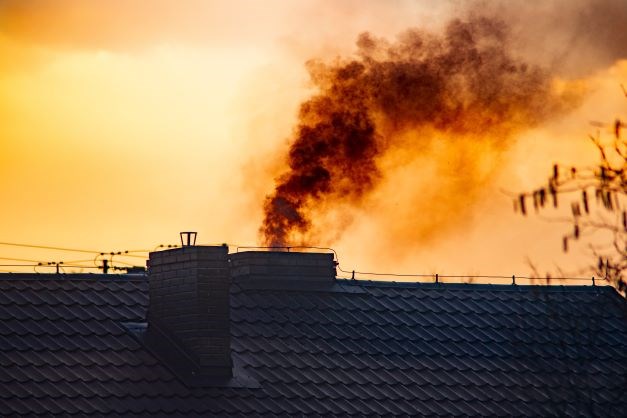42% of households in Poland use district heating, which puts our country in the lead in Europe
However, more than 80% of system heat comes from fossil fuels, mainly coal combustion. This structure of heat generation has no future due to the need to reduce CO2 emissions and limit political risks associated with importing raw materials to Poland, according to a report by Forum Energii.

Obsolete heating technologies must be replaced by modern solutions using local, renewable energy sources.
In order to benefit from the full range of solutions - it is necessary to change the parameters of district heating networks. In the latest Energy Forum report, prepared jointly with TEP Energy, the AGH University of Science and Technology and Kelvin, we identify solutions that will allow the implementation of low-temperature networks in Poland and support the modernisation of the heat sector.
The heating sector in Poland is facing a revolution. In 25 years' time, 100% of heat should come from RES and waste energy. District heating companies are currently developing plans to achieve climate neutrality, and the Ministry of Climate and Environment has announced that it will accelerate work on a comprehensive strategy for the sector. This should take a comprehensive view of the situation and set ambitious targets - both in terms of energy efficiency and the implementation of low-carbon technologies in district heating and heating. The missing link in thinking about the transformation of the heat sector is the development of low-temperature networks.
Low-temperature networks - new opportunities
Most district heating networks in Poland are designed to transport water heated to at least 120 degrees Celsius. Such a high network operating temperature blocks the possibility of using many modern, well-developed technologies in other countries that produce heat from renewable sources, geothermal or waste energy. The way to unlock the potential is to lower the operating temperature of the grid to levels below 100 degrees.
Lower grid operating temperatures are a natural consequence of the evolution of heating and building technologies. In modern construction, there is no reason to use high-temperature heating. This is often the result of habit and a certain technological tradition.
To change this, it is necessary to start popularising the advantages and possibilities of modern low-temperature networks. These include:
- the possibility of feeding energy directly into the grid, whether it comes from geothermal energy, solar collectors, waste heat or energy stored in seasonal heat stores;
- an improvement in the efficiency of large-scale heat pumps, which are an essential technology for bringing the temperature obtained from primary energy sources up to the levels required by the grid, where necessary;
- an increase in the efficiency of electricity generation in combined heat and power (CHP) units;
- reduction of heat losses and improvement of the energy efficiency of the heat supply process;
- increase in flexibility of district heating supply and demand;
- an increase in the variety of construction materials used in the construction of district heating networks (e.g. the possibility of greater use of plastics).
Impetus from the state
The process of transitioning the country's district heating networks to lower temperature levels will be a multi-stage process. Not only is a reduction in heat demand needed, e.g. through thermal modernisation of buildings, but also a change in the guidelines for the design and operation of district heating networks and the internal installations of buildings. However, this does not mean that it is impossible to implement. In many cases, especially in small systems, temperature reduction is already possible today, practically without investment.
Starting this process requires a push and commitment from the state. The government should create financial support mechanisms for investment in this area. It will be crucial to focus on waste heat sources, renewable energy sources, energy storage and digitalisation, which will enable stable cooperation of multiple energy sources. Low-temperature networks should also be reflected in district heating development plans.
- Burning biomass and municipal waste alone will not replace the energy obtained from burning fossil fuels. To meet the demand of heat consumers, a whole range of additional renewable energy sources are needed, as well as the large-scale use of waste heat, which is simply wasted today. These new energy sources have low operating costs, which will keep the price of heat at a level that is attractive to households. The more energy there is, the lower the cost of heating homes will be than using traditional fuels,' says Andrzej Rubczyński of Forum Energii, one of the report's co-authors.
The domestic heating sector is on the threshold of a major transformation. The move towards climate neutrality and the need to provide heat to consumers at an acceptable cost means that around 40 GWt of coal- and oil-based heat sources will have to be phased out in the next decade.
This is a major challenge not only for the heating industry, but also for the market for heating equipment, which should ensure a supply of heating equipment of sufficient quality, in sufficient numbers and at affordable prices. In the latest report entitled. "Low-temperature district heating networks. A basis for modernising the heat sector" The Energy Forum recommends a whole range of measures that will diversify the sector's demand for heating technologies and, at the same time, allow the transition to leapfrog the phase of replacing decommissioned generation capacity with gas-fired sources. This will allow a qualitative leap towards modern district heating.
The full report is available on the Energy Forum website



